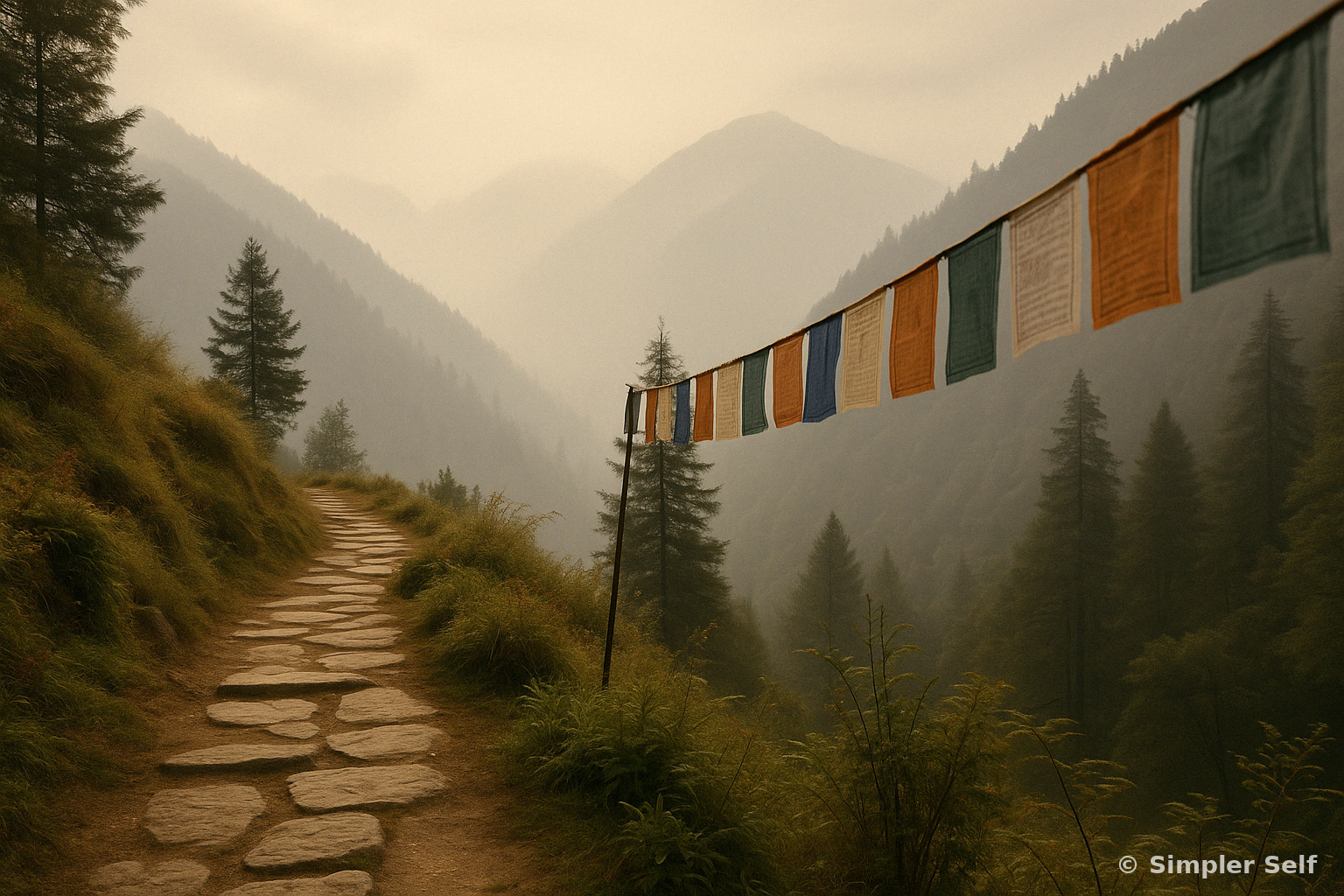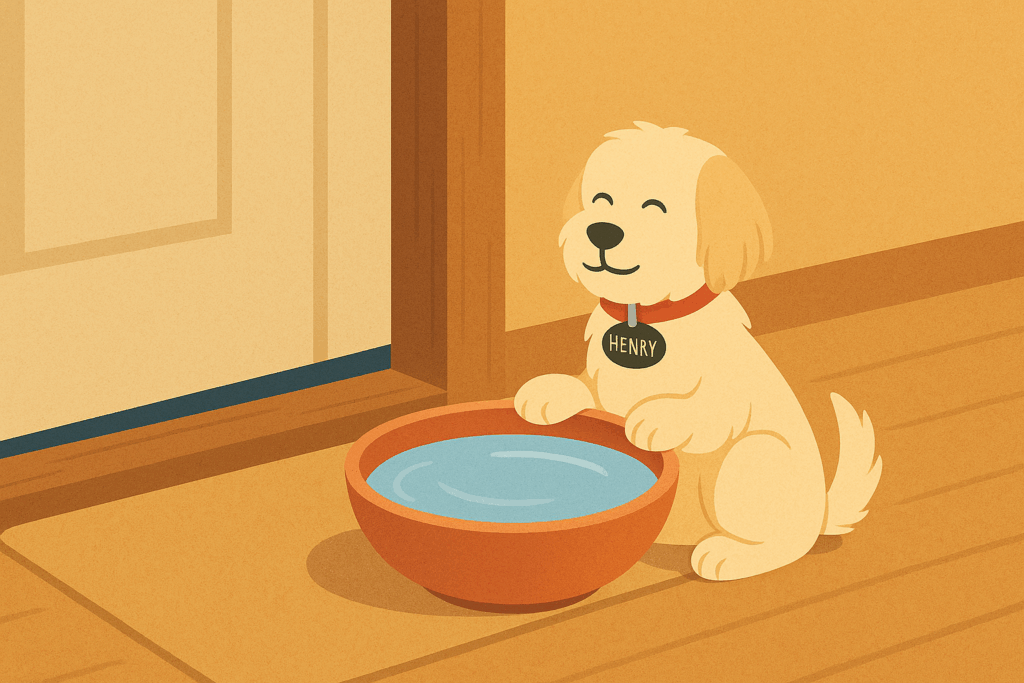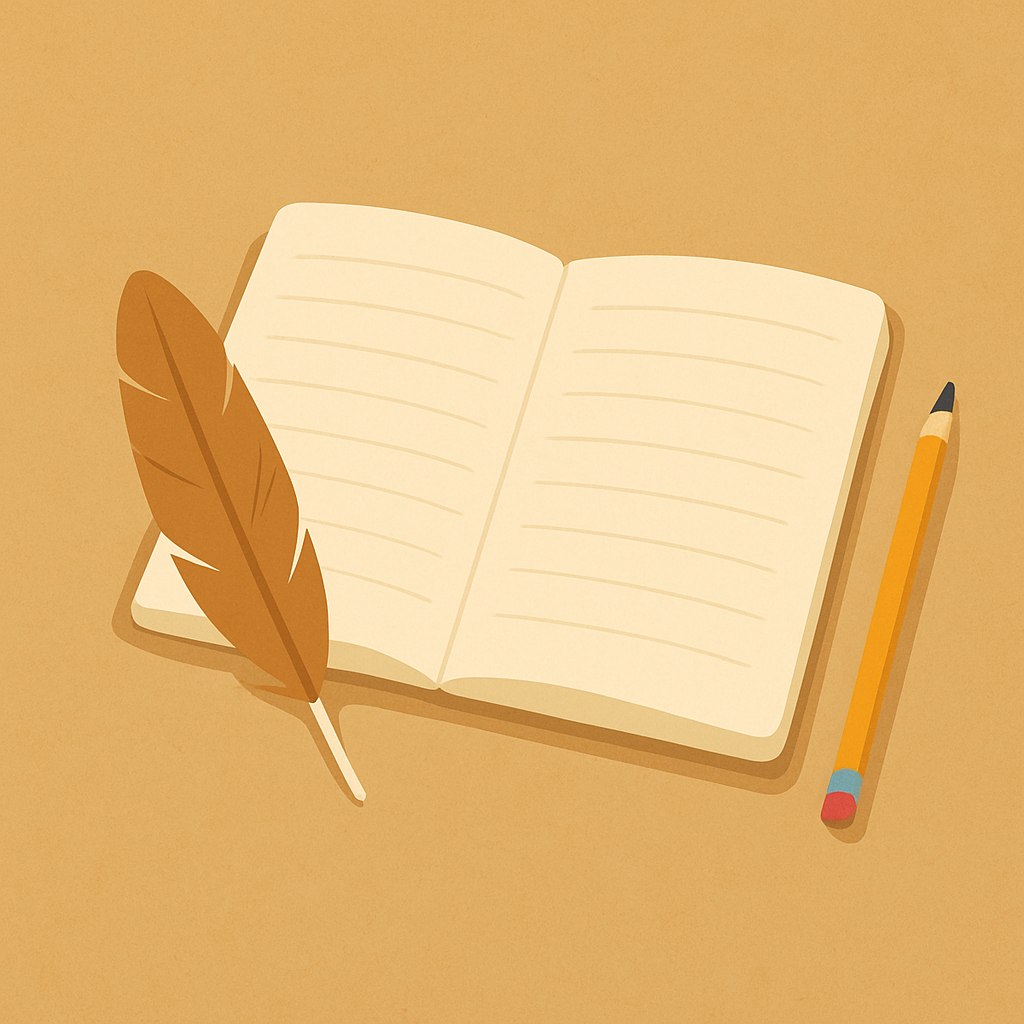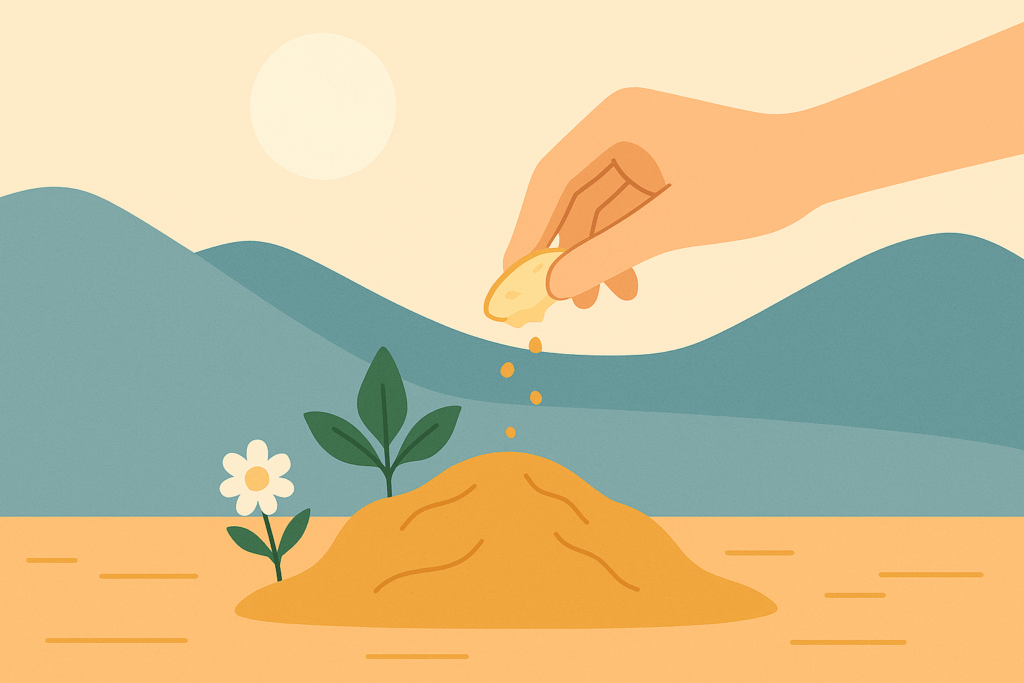🌀 Buddhism for Real Life — Part 1 of 10
A Buddhist series for real life. See all posts in the series.
Buddhism teaches us not to escape life — but to understand it.
You don’t need a shaved head or a cave in the Himalayas to practice Buddhism.
You don’t even need to sit cross-legged if your knees hate you. What you do need is curiosity, honesty, and a desire to live a little more awake.
Buddhism isn’t a religion in the Western sense. There’s no required belief in a creator god, no membership card, and no robe fittings. It’s a path — a way to see clearly, feel deeply, and suffer less.
So… what is Buddhism?
At its core, Buddhism is about understanding the mind and relieving suffering — yours and others’. The Buddha wasn’t a god. He was a person, Siddhartha Gautama, who saw that all beings face discomfort, dissatisfaction, and change… and that we often make it worse by clinging to what won’t last.
He taught a way out — through awareness, compassion, and practical tools for everyday life. This became known as the Dharma (the teachings) and it’s been passed down for over 2,500 years, especially deeply preserved in traditions like Tibetan Buddhism.
Okay, but what does that mean for me?
Great question. If you’ve ever:
- Gotten angry over spilled oat milk
- Felt stuck on a treadmill of productivity
- Wondered why joy doesn’t last
- Tried meditating and ended up mentally reorganizing your pantry
…you’re in the right place.
Buddhism doesn’t ask you to reject your life — it invites you to wake up within it. As a householder (that’s Buddhist-speak for “not a monk”), your path might include laundry, emails, parenting, grief, and yes, maybe a meditation app that keeps reminding you to breathe.
That’s the path. It’s not separate.
A Simpler Definition
Here’s one way to describe Buddhism you won’t find in textbooks:
“It’s like updating your inner operating system — so you don’t crash every time life does something unexpected.”
Instead of reacting automatically, Buddhism helps you respond intentionally. You learn to see patterns, hold emotions with kindness, and recognize when your mind is spinning stories that aren’t helpful.
What Buddhism Isn’t:
- It’s not self-help with robes.
- It’s not about perfection.
- It’s not only for vegans or minimalists (though hey, you’re welcome here).
- It’s not a checklist for being “good.”
It is about facing life with honesty and care. And the best part? You don’t have to believe anything. You try it out. You see if it helps. Even the Buddha said: “Don’t just take my word for it. Test it like gold.”
What’s Next in The Everyday Path
In this series, we’ll explore the teachings in plain language — things like:
- What the Four Noble Truths are actually about
- How to meditate without getting overwhelmed
- Whether karma means you deserve your bad days (spoiler: nope)
- What it means to practice “non-attachment” when you still love your kids, your cat, or your garden gnome
Each post is written with you in mind — someone who wants depth without dogma, tradition without fluff, and a spiritual path that can live beside your to-do list.
🪷 Just One Breath
Before your next cup of tea or coffee, pause. Just for a breath.
Feel the warmth, the smell, the moment. That’s it. That’s awareness.
Welcome to the path.
Sources & Notes:
- The Buddha’s famous quote on testing teachings comes from the Kalama Sutta (Anguttara Nikaya 3.65).
- Historical reference: Siddhartha Gautama lived in the 5th–6th century BCE in what is now Nepal and India.




